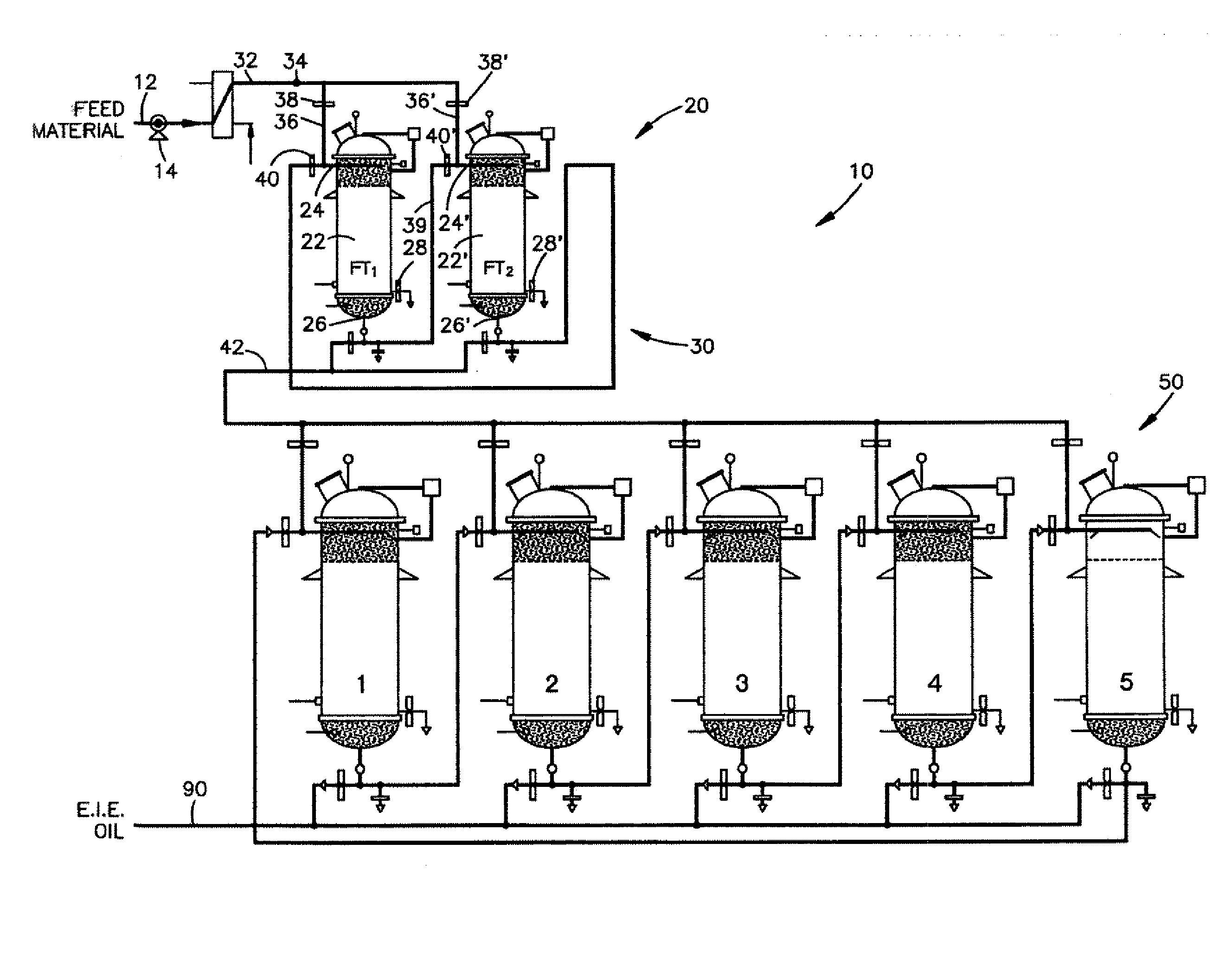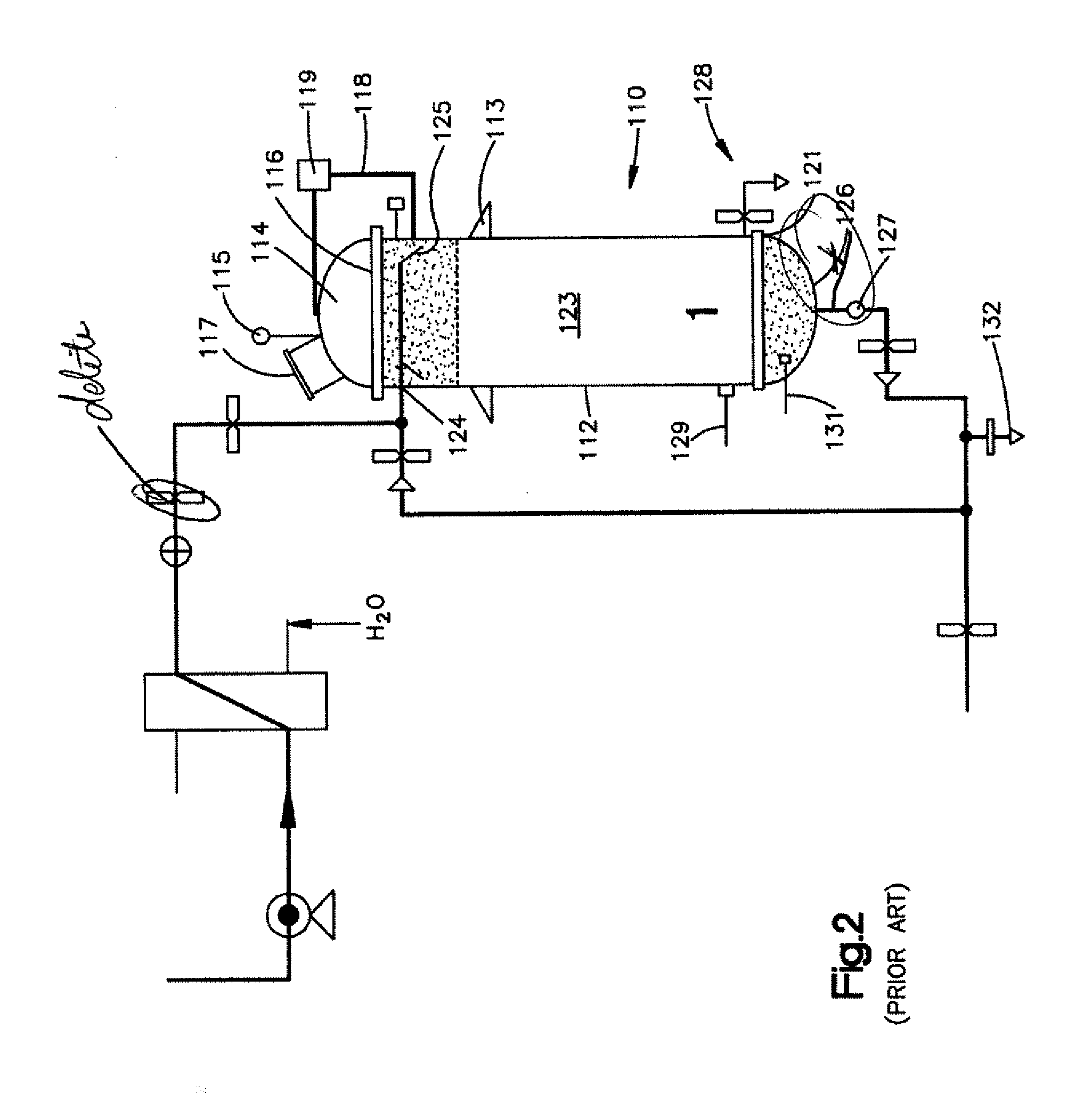Continuous process and apparatus for enzymatic treatment of lipids
a technology of lipids and enzymology, which is applied in the direction of biomass after-treatment, fatty-oil/fat refining, biofuels, etc., can solve the problems of sodium methoxide catalysts being dangerous and difficult to handle, not affording the manufacturer the degree, and affecting the performance or aesthetic properties of components
- Summary
- Abstract
- Description
- Claims
- Application Information
AI Technical Summary
Benefits of technology
Problems solved by technology
Method used
Image
Examples
example 1
Verification of Enzymatic Interesterification
Control
[0080]The oil used in each of the following examples was a blend of fully hydrogenated refined and bleached oil produced from Palm Kernel (PK) and Palm Oils (PO) (60:40 blend), utilized as the hard stock for a “zero” trans type margarine product having “zero” trans-fatty acids, and brought to liquid temperature and bleached with 1% bleaching earth and 0.5% of TrySil® silica in accordance with known methods. The vacuum was broken with nitrogen and the resulting material was stored at less than 10° Celsius until used in the various examples herein.
[0081]In the initial verification of enzymatic interesterification, samples of the oil blend were interesterified without any pre-treatment utilizing both the traditional CIE (chemical interesterification) method with sodium methoxide catalyst and the EIE (enzyme interesterification) process using Novozymes Lipozyme® TL IM immobilized enzyme. In the CIE process, 400-500 g of the dried oil b...
example 2
Evaluation of Citric Acid as Pre-Treatment Process Aid
Comparative Example
[0084]It has been suggested that trace metals present in oil products can oxidize the oil and cause premature de-activation of the enzyme. Citric acid will act as a chelation agent for trace metals, resulting in their inactivation, as reported by Dutton et al. in the J.A.O.C.S. (1948 and 1949). Accordingly, citric acid was tested as a pre-treatment process aid to determine if it would result in prolonged enzymatic activity in a subsequent EIE process. Two trials of citric acid as a pre-treatment process aid were conducted. A laboratory scale enzyme interesterification treatment system as described in Example 1 was used, but using three columns connected in series. The second and third columns in the series were of Type “1” as illustrated in FIG. 5 and used in Example 1 above, but the first column was of Type “2” illustrated in FIG. 5. Each of the three columns was packed with roughly 7 grams of Novozymes Lipozy...
example 3
Evaluation of EDTA as Pre-Treatment Process Aid
PUM
| Property | Measurement | Unit |
|---|---|---|
| pore size | aaaaa | aaaaa |
| pore size | aaaaa | aaaaa |
| density | aaaaa | aaaaa |
Abstract
Description
Claims
Application Information
 Login to View More
Login to View More - R&D
- Intellectual Property
- Life Sciences
- Materials
- Tech Scout
- Unparalleled Data Quality
- Higher Quality Content
- 60% Fewer Hallucinations
Browse by: Latest US Patents, China's latest patents, Technical Efficacy Thesaurus, Application Domain, Technology Topic, Popular Technical Reports.
© 2025 PatSnap. All rights reserved.Legal|Privacy policy|Modern Slavery Act Transparency Statement|Sitemap|About US| Contact US: help@patsnap.com



